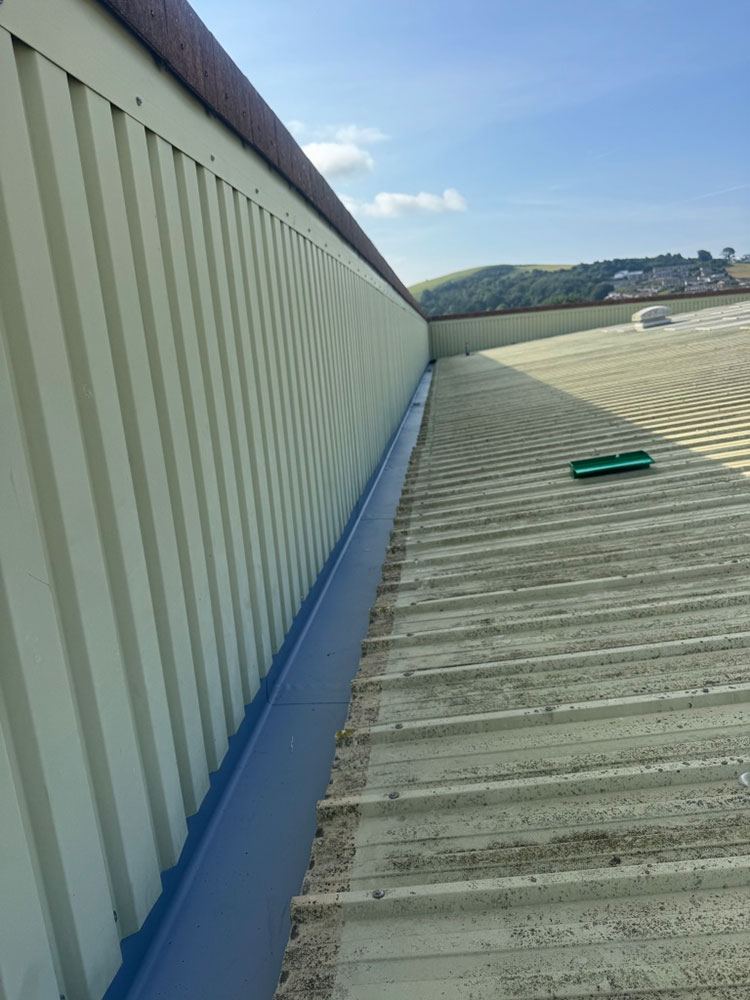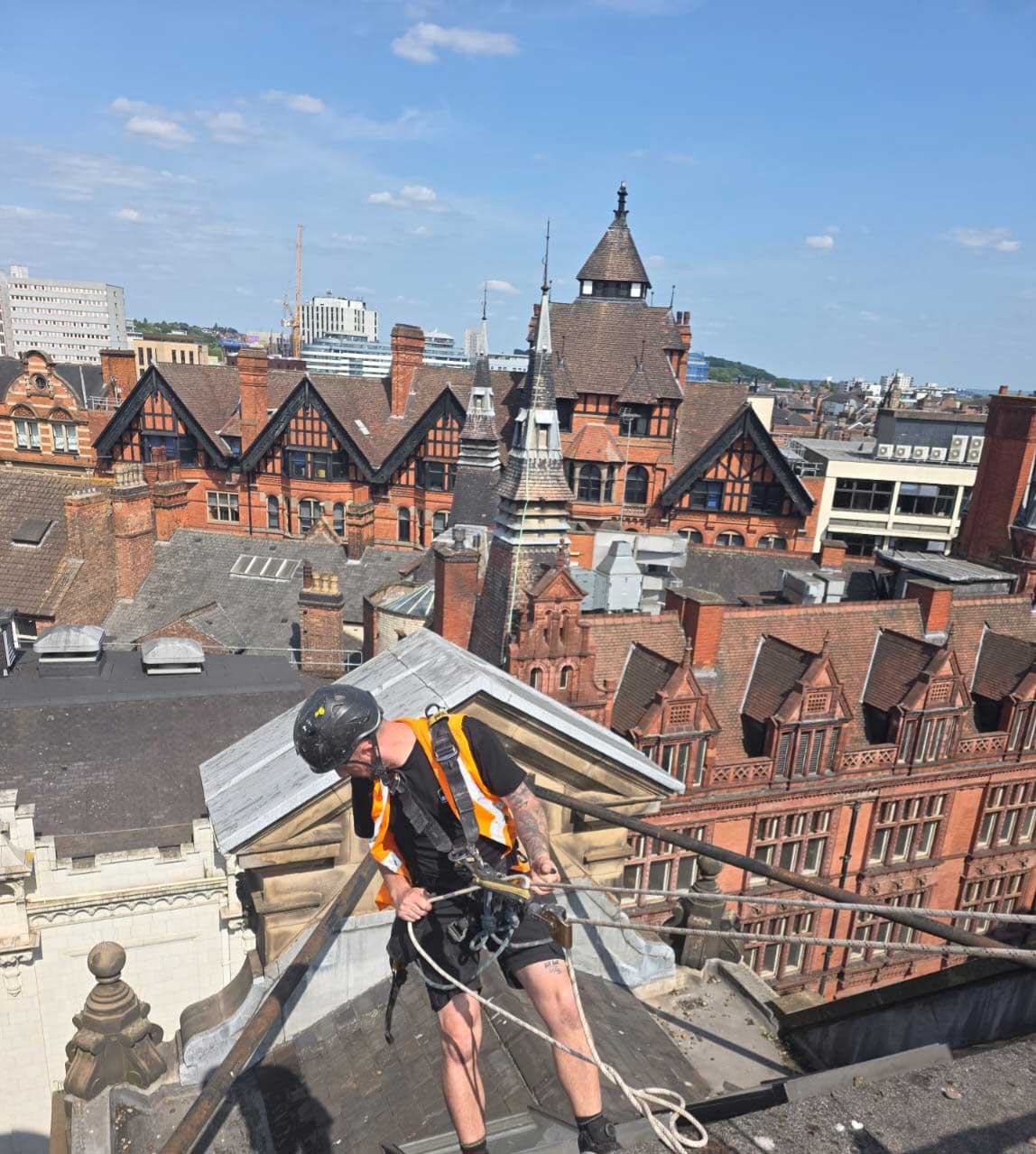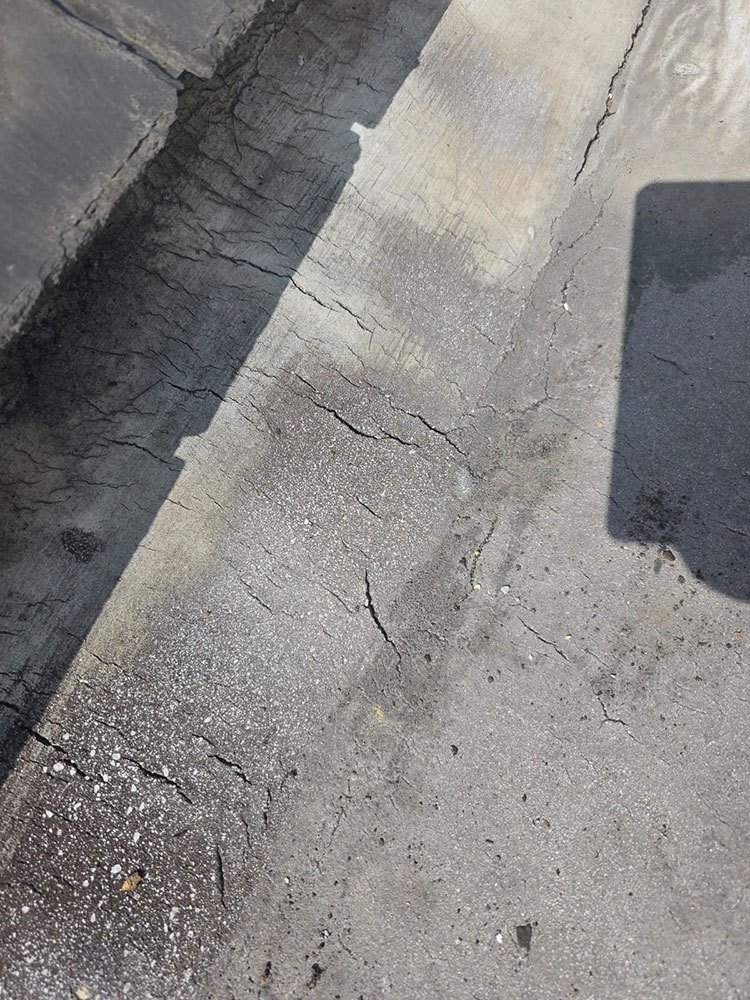
The choice between flat and pitched roofing systems represents one of the most fundamental decisions in commercial building design, with far-reaching implications for construction costs, operational efficiency, maintenance requirements, and long-term building performance. While residential construction heavily favors pitched roofs, commercial architecture presents unique opportunities and challenges that make both roofing types viable options depending on specific project requirements, climate conditions, and functional needs.
Modern commercial buildings serve diverse purposes, from manufacturing facilities and warehouses to office complexes and retail centers, each with distinct operational requirements that influence optimal roofing design. The decision between flat and pitched roofing systems must consider factors including initial construction costs, energy efficiency, maintenance accessibility, equipment accommodation, aesthetic preferences, and local building codes. Understanding the advantages and limitations of each roofing type enables architects, engineers, and building owners to make informed decisions that optimize both immediate construction budgets and long-term operational success.
Contemporary roofing technologies have significantly expanded the performance capabilities and design options available for both flat and pitched commercial roofing systems. Advanced membrane materials, improved insulation systems, and sophisticated drainage solutions have addressed many traditional limitations while opening new possibilities for innovative architectural expressions. However, fundamental differences in structural requirements, water management approaches, and maintenance protocols continue to influence the suitability of each roofing type for specific commercial applications.
Flat Roof Systems: Advantages and Applications
Flat roofing systems dominate commercial construction for compelling reasons related to cost efficiency, space utilization, and operational functionality. Despite the name, flat roofs typically incorporate slight slopes for drainage, generally ranging from 1/8 inch to 1/2 inch per foot to ensure proper water evacuation while maintaining the practical benefits of level surfaces.
Cost Efficiency and Construction Speed
Flat roofs offer significant economic advantages in commercial construction, primarily through reduced material requirements and simplified installation processes. The structural framework for flat roofs requires fewer materials than pitched systems, as the roof deck can utilize shorter spans without complex angle cuts or specialized framing components. This translates to lower material costs and reduced labor requirements during construction.
Installation efficiency represents another major advantage, as roofing crews can work more safely and quickly on level surfaces compared to sloped installations. Equipment and materials can be easily positioned and moved across flat surfaces, reducing installation time and associated labor costs. Large commercial projects particularly benefit from these efficiency gains, where even small per-square-foot savings can translate to substantial overall cost reductions.
Space Utilization and Equipment Integration
Commercial buildings frequently require substantial mechanical equipment installations, and flat roofs provide ideal platforms for HVAC systems, cooling towers, telecommunications equipment, and other building infrastructure. The level surface simplifies equipment mounting, maintenance access, and future modifications without the complications associated with sloped installations.
Rooftop space utilization extends beyond mechanical systems to include amenities like recreational areas, gardens, solar panel arrays, and even additional building space through rooftop structures. Urban commercial buildings particularly benefit from this space utilization, where ground-level space commands premium prices and rooftop areas represent valuable development opportunities.
Accessibility and Maintenance Advantages
Flat roofs provide safer and more convenient access for maintenance personnel, inspection activities, and equipment servicing. Workers can move easily across level surfaces with standard safety equipment, reducing both safety risks and maintenance costs compared to pitched roof access requirements. This accessibility proves particularly valuable for buildings with extensive rooftop equipment requiring regular maintenance.
Emergency access and egress capabilities represent additional safety benefits, as flat roofs can accommodate helicopter landings for medical emergencies or fire department operations in high-rise buildings. Many building codes recognize these safety advantages and may require flat roof areas for emergency access in certain building types.
Flat Roof Limitations and Challenges
Despite significant advantages, flat roofing systems present unique challenges that must be carefully addressed through proper design, installation, and maintenance practices.
Water Management and Drainage Concerns
Water evacuation represents the primary technical challenge for flat roofing systems, as slight slopes and multiple drainage points must work together to prevent ponding water and ensure complete drainage. Inadequate drainage design or blocked drainage systems can lead to standing water that accelerates membrane deterioration and increases the risk of leaks and structural damage.
Freeze-thaw cycles in cold climates create additional complications, as ice formation can block drainage systems and create ice dams that trap water on roof surfaces. These conditions require specialized design considerations and maintenance protocols to prevent water infiltration and structural damage.
Membrane Durability and Maintenance Requirements
Flat roof membranes experience constant exposure to UV radiation, thermal cycling, and weather conditions without the natural shedding action that helps protect pitched roof materials. This exposure requires high-performance membrane materials and regular maintenance to achieve acceptable service life expectations.
Thermal movement in large flat roof areas creates stress concentrations at seams, penetrations, and attachment points that can lead to membrane failure if not properly accommodated through design and installation techniques. Regular inspection and preventive maintenance become critical for identifying and addressing these stress-related issues before they cause leaks or structural problems.
Pitched Roof Systems: Advantages and Performance
Pitched roofing systems offer distinct advantages in water management, durability, and aesthetic appeal that make them preferred choices for specific commercial applications and architectural styles.
Superior Water Management
Pitched roofs provide natural water shedding through gravity drainage, eliminating concerns about ponding water and reducing reliance on mechanical drainage systems. The sloped surfaces direct water flow toward gutters and downspouts, creating redundant drainage pathways that reduce the risk of drainage system failures causing roof damage.
Snow shedding capabilities in cold climates represent a significant advantage, as steep slopes naturally shed snow loads that could otherwise accumulate to dangerous levels on flat surfaces. This natural load shedding reduces structural requirements and eliminates concerns about snow dam formation that can affect flat roofing systems.
Material Longevity and Weather Resistance
Pitched roof materials benefit from natural water shedding that reduces moisture exposure time and minimizes conditions conducive to material degradation. Metal roofing systems, clay tiles, and slate installations on pitched roofs can achieve service lives of 50-100 years with minimal maintenance, significantly exceeding typical flat roof membrane lifespans.
Wind resistance characteristics of properly designed pitched roofs can exceed flat roof performance, particularly in high-wind coastal areas where uplift forces present significant design challenges. The aerodynamic properties of pitched roofs reduce wind-induced stresses and improve overall weather resistance.
Architectural Flexibility and Aesthetic Appeal
Pitched roofs offer extensive architectural design possibilities that can enhance building appearance and align with aesthetic preferences or neighborhood requirements. Material options including metal, tile, slate, and specialized membrane systems provide diverse appearance options that flat roofs cannot easily accommodate.
Interior space utilization beneath pitched roofs can create valuable attic areas for storage, mechanical systems, or even occupied space through proper design. These spaces often provide more cost-effective square footage than equivalent ground-level construction while adding architectural interest to building profiles.
Pitched Roof Limitations and Considerations
Pitched roofing systems present specific challenges and limitations that must be evaluated against their advantages for commercial applications.
Higher Construction Costs and Complexity
Structural requirements for pitched roofs typically exceed flat roof costs due to longer spans, complex framing systems, and specialized connection details. The additional materials and labor required for pitched roof construction can represent 15-30% higher costs compared to equivalent flat roof systems, depending on roof slope and complexity.
Installation complexity increases with roof slope, as workers require specialized safety equipment and techniques to work safely on sloped surfaces. This complexity can extend installation timelines and increase labor costs, particularly for complex roof configurations with multiple slopes and intersections.
Limited Equipment Accommodation
Rooftop equipment installation becomes significantly more challenging on pitched roofs, often requiring specialized mounting systems and access platforms that increase installation and maintenance costs. Large HVAC systems, cooling towers, and other commercial building equipment may be impractical or impossible to install on steeply sloped roofs.
Maintenance access presents ongoing challenges, as routine inspections and repairs require specialized safety equipment and techniques that increase maintenance costs. These access limitations can also delay emergency repairs and complicate insurance inspections.
Climate Considerations and Regional Factors
Climate conditions significantly influence the relative performance and suitability of flat versus pitched roofing systems for commercial applications.
Cold Climate Performance
Cold climates with significant snow loads favor pitched roofs for their natural snow shedding capabilities and reduced structural loading requirements. Ice dam prevention becomes much simpler with steep slopes that naturally shed ice and snow before dangerous accumulations can form.
Flat roofs in cold climates require robust structural design to accommodate snow loads and sophisticated drainage systems to handle spring melting without ice blockages. However, proper design and installation can create successful flat roof systems even in harsh winter conditions.
Hot Climate Considerations
Hot, arid climates present advantages for both roofing systems, though each performs differently under intense solar exposure. Flat roofs can accommodate reflective membrane systems and extensive insulation that reduce cooling loads, while pitched roofs can utilize reflective metal systems that shed heat effectively through natural convection.
UV exposure intensity in hot climates affects material selection for both systems, though flat roof membranes typically experience more intense exposure due to direct solar angles throughout the day.
Wind and Storm Resistance
High-wind coastal areas require careful evaluation of both roofing types, as each presents distinct advantages and vulnerabilities. Pitched roofs can provide excellent wind resistance when properly designed, while flat roofs may be more susceptible to uplift forces but easier to repair after storm damage.
Hurricane and tornado-prone regions often favor pitched roofs for their superior wind resistance, though flat roofs with proper edge details and attachment systems can also perform well in extreme weather conditions.
Building Type Applications and Use Cases
Different commercial building types present distinct requirements that favor one roofing system over another based on operational needs and functional requirements.
Manufacturing and Industrial Facilities
Manufacturing buildings typically favor flat roofs for their equipment accommodation capabilities and cost efficiency over large spans. The ability to support heavy industrial equipment, extensive ventilation systems, and crane operations makes flat roofs the practical choice for most industrial applications.
Warehouse and distribution centers benefit from flat roof cost efficiency and space utilization, particularly for facilities requiring extensive rooftop equipment or future expansion capabilities. The lower construction costs become significant advantages for large-footprint buildings with tight budget constraints.
Office and Commercial Buildings
Office buildings present opportunities for both roofing types, with decisions often influenced by architectural preferences, climate conditions, and equipment requirements. Flat roofs offer rooftop amenity possibilities and equipment space, while pitched roofs can provide distinctive architectural character.
Retail buildings frequently utilize flat roofs for cost efficiency and equipment accommodation, though pitched roofs may be preferred for aesthetic reasons or to match surrounding architectural styles in shopping centers and standalone locations.
Specialized Building Applications
Healthcare facilities often prefer flat roofs for helicopter landing capabilities and extensive mechanical system accommodation, though pitched roofs may be selected for aesthetic reasons in campus settings.
Educational buildings present mixed applications, with flat roofs common for classroom buildings and pitched roofs often preferred for administrative buildings and libraries where architectural character is prioritized.
Future Trends and Emerging Technologies
The commercial roofing industry continues evolving with new technologies and changing building requirements that influence the relative advantages of flat versus pitched roofing systems.
Green Roofing and Sustainability
Green roof systems strongly favor flat roof applications due to weight distribution, irrigation requirements, and maintenance access needs. As sustainability becomes increasingly important in commercial construction, flat roofs may gain additional advantages through their compatibility with extensive green roof systems and urban heat island reduction strategies.
Solar panel integration presents opportunities for both roofing types, though installation and maintenance considerations often favor flat roof applications for commercial-scale installations. The growing importance of renewable energy may influence roofing decisions as building owners seek to maximize solar generation potential.
Smart Building Integration
Advanced building monitoring and control systems are increasingly integrated into roofing systems through embedded sensors, weather stations, and automated maintenance systems. Flat roofs typically provide easier accommodation for these technologies, though pitched roofs can also incorporate smart building features through proper planning.
The selection between flat and pitched roofing systems for commercial buildings requires careful evaluation of multiple factors including construction costs, operational requirements, climate conditions, and long-term performance expectations. While flat roofs dominate commercial construction due to cost efficiency and space utilization advantages, pitched roofs remain valuable options for specific applications where their unique benefits align with project requirements. Success with either system depends on proper design, quality installation, and appropriate maintenance protocols that address each system’s specific requirements and limitations.









